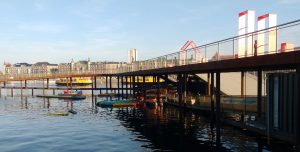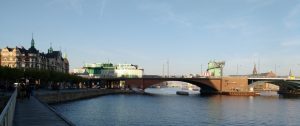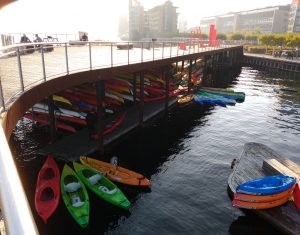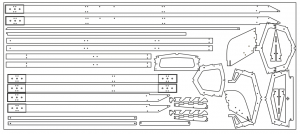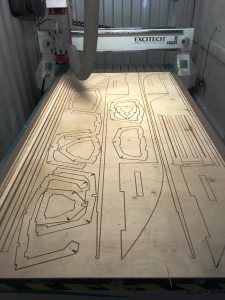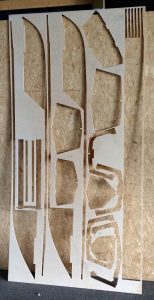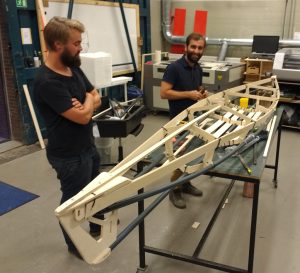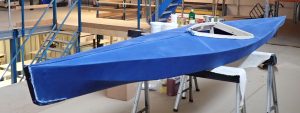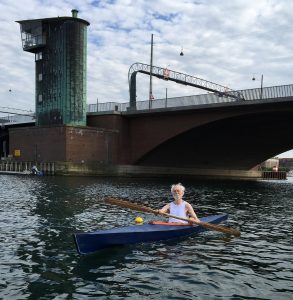Copenhagen’s harbour is turning into a theme park, with swimming pool, kayak hire, water buses and ever more numerous tourist boats. Here is a complicated and decorated structure with no discernible purpose other than sauntering by the open air art and hiring a kayak.
A little further north is a relatively ancient bridge, Langebro, with its green copper control tower and the openable span on the right.
The left abutment of the bridge is in the vast shadow cast by a bank office, whose tax helps transform Copenhagen into the remarkably humane metropolis it has become. This bridge support contains a surprisingly spacious suite of rooms, once used by the people servicing the bridge, but now taken over by “Underbroen” (under the bridge), which is a cooperative of craftspeople, artists, nerds and people who combine all these titles to make things.
To compete with the roto-moulded polyethylene kayaks, Underbroen has a kayak building project, a kayak whose structure is designed to be cut by a computer controlled mill out of a single, standard sized sheet of plywood, 12 mm thick.
The components are drawn in a vector drawing program.
This two dimensional drawing is then converted by another program which drives the cutter.
The resulting negative image is decorative in its own right.
The components are tied together with nylon zip ties.
Electrical conduit tubes in PVC form the keelson and the side stringers.
The computer controlled cutter allows very precise fitting of the various parts. Careful detail design ensures accurate relative positions of the gunwales and keel to make a symmetrical boat.
Once the frame was assembled a cotton canvas was stretched around the hull and sewn at bow, stern and cockpit. One can see a defect towards the stern where the stress from the stretched cotton has distorted the line of the side stringer. We probably need to put an extra cross piece to stiffen the frame here. Also the sewing is a slow job, so we aim to test stainless steel staples instead of sewing.
The final covering was several coats of linseed oil paint.
All this took a long time. The many adjustments took four people about a year at three hours a week, so I was taken by surprise to turn up at Underbroen one evening and immediately be invited to test drive the boat.
Photo: Yannis Bampos
I did not have my usual paddling kit, so used the opposite technique of stripping down to minimal clothing that, if it got wet, could be packed away for the train and bus journey home to Roskilde. Note the Greenland style paddle, also made from laminated layers of plywood.
At this point traditional kayak building experts will complain that this boat is not compostable, being full of industrial materials, cut by expensive automated machinery, controlled by computer programs and completely at odds with the trend towards natural materials and green techniques.
Our argument is that our kit, when perfected, can be put together in one day, by almost anyone, using just the printed instructions and very few tools. A traditional Greenland kayak, even using pre-dimensioned timber pieces, takes at least a week of full time work, and some skill in bending the ribs.
tim 2018-10-12
